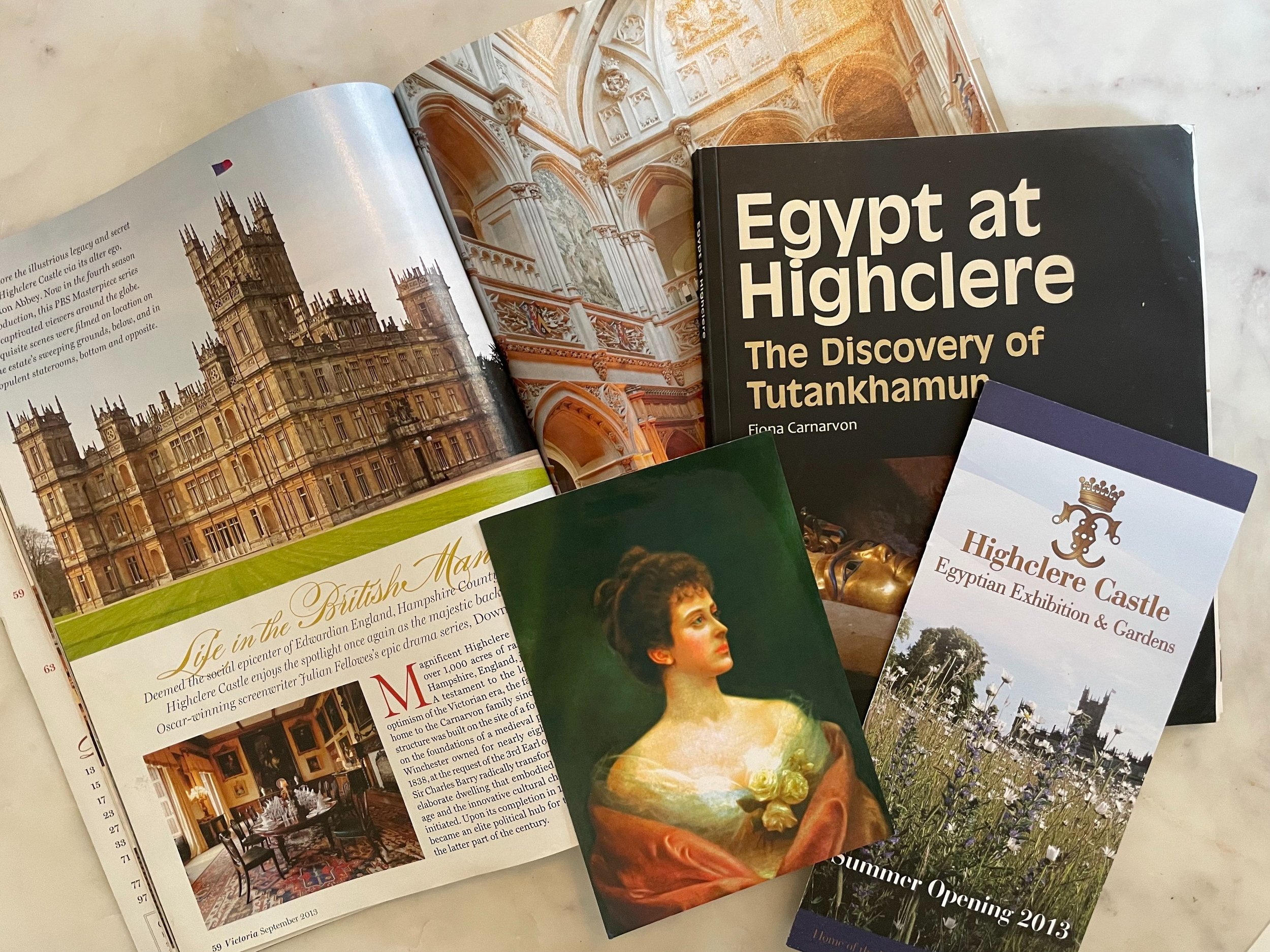Read: Lady Almina & the Real Downton Abbey
Lady Almina and the Real Downton Abbey
By The Countess of Carnarvon
Lady Fiona and her Husband Geordie, the 8th Earl of Carnarvon, settled into Highclere Castle in 2001. I had the great pleasure of visiting Highclere Castle and its stunning grounds with a dear friend in 2013. It was there I learned that Fiona had written a book about the Fifth Earl of Carnarvon and his wife, Lady Almina.
At just 19 years old and spectacularly wealthy when she married the 5th Earl of Carnarvon, Almina was believed to be the illegitimate daughter of Alfred de Rothchild. Officially she was the daughter of Marie and Fred Wombwell, and although Rothchild doted on Almina, it’s been said he never openly acknowledged she was his child.
The book opens in 1895 with the wedding of Almina, an American with a “somewhat dubious standing” due to the circumstances of her birth, and Edward Stanhope Molyneux Herbert, who was from a distinguished British family, but had a surprisingly lack of ready cash. Much like her Masterpiece Theater counterpart, Lady Cora Crawley, Almina brought an incredibly generous dowry to the marriage in exchange for a title and a place in the British aristocracy.
The couple took up residency at Highclere Castle, which was of course made famous as the fictional Downton Abbey. I’m not particularly a fan of the Brits’ long-standing rules about who could do this, or own that, or become this, or inherit that, and of course marry whom. But I found it fascinating to delve into the lives of both the inhabitants of the Upstairs and the Downstairs during the Victorian and Edwardian eras. I felt a different kind of empathy for those residing in both living quarters, and realized neither class had a choice in how much of their ‘determined at birth’ lives played out.
Readers learn a great deal about the social norms of the Upper Classes and the history of Highclere. Lady Fiona did meticulous research as to the extensive and demanding training Almina had to undergo to learn how to run and maintain a royal household, as well as keep up with the rules of etiquette and the proper never-ending changes of clothes.
The book also includes a detailed, gruesome account of life during WWI, and the devastating toll it took on the British people, especially to all who lost their lives, limbs, and minds serving on the front lines and in the trenches. The author focuses on all the good Almina did by turning her castle into a hospital for wounded British soldiers returning from WWI. The bills were paid as always by Rothchild.
Almina supported the 5th Earl of Carnarvon in his archaeological quests to uncover new discoveries. She traveled with him many times to Egypt and financed, with Rothchild’s money, his 17 years of excavations culminating in the most famous archaeological discovery of all, King Tut's tomb, the only ancient burial site ever found intact.
Lady Fiona packs in so much historical information you might find your head spinning from time to time. It begins with Almina’s grand wedding then covers King Edward’s extra-lavish visit to Highclere, the devastation to the people and the country during WWI, the turning over of Highclere into a hospital for the wounded, the spectacular discovery of King Tut’s Tomb, and the Earl’s untimely death by a mosquito bite in 1923. Only in the last few pages does the author mention anything about Almina’s postwar life and her speedy second marriage.
It’s understandable the current Duchess of Carnarvon wanted to exploit the book’s link to Downton Abbey and her family’s relationship to Julian Fellowes. She chose to focus on all of the good things about Almina, decided to end the story in 1924, and chose not to dwell on Lady Almina’s grim last 45 years. The reader is not told that another far less complimentary version of Almina can be found in another account by William Cross.
Even though this book omitted a lot of information about Almina’s later period of her life, Almina truly did find strength and forte as a nurse, and spent years of her life diligently working in that calling. I found it a fascinating read and learned a lot about WWI, Egyptian Archaeology, and the rigid class system during the Victorian and Edwardian Eras.
What does seem to be true is that Highclere is still beautiful thanks to Almina’s rich dowry and subsequent money provided by Alfred de Rothchild. Her heirs were left with hope and the responsibility of maintaining Highclere for generations to come. Lady Fiona has found creative ways to continue preserving the grounds despite enormous death and income taxes through her book writing, and by opening up the Castle, sharing it’s history to the adoring public, and making it possible for fans to personally see for themselves the opulent sets and settings of Downton Abbey. I enjoyed the book very much, I thoroughly enjoyed my visit to Highclere Castle, and I wholeheartedly recommend visiting yourselves!
Be sure to check out the WATCH and GO parts of this Book Club Bundle! WATCH or re-watch Downton Abbey and plan a trip to GO to Highclere Castle where you will immediately become immersed in the world of the Crawley family.


